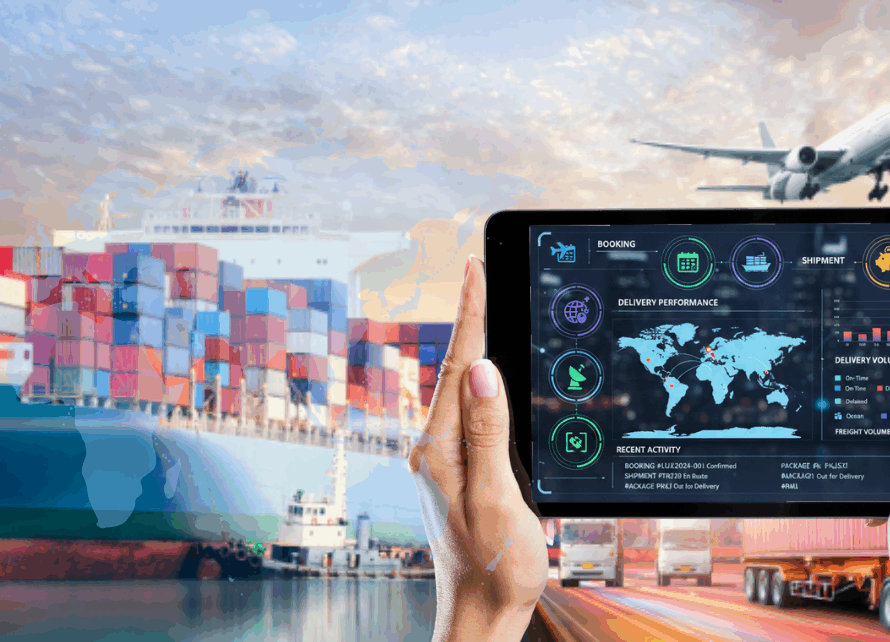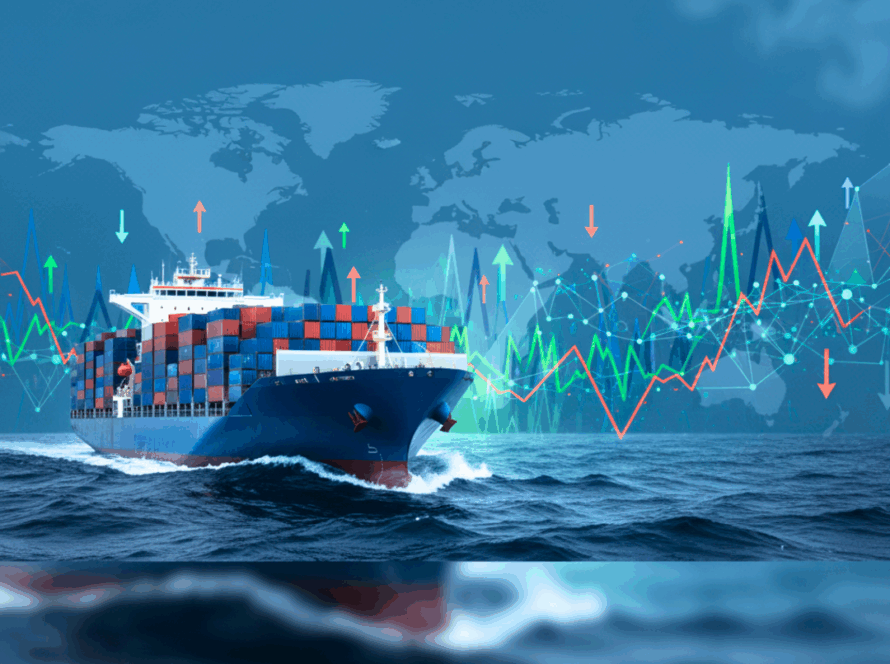The innovation of Hyperloop, as first suggested by Elon Musk in 2013, has been noticed widely in the transport sectors. While the spotlight has mainly been on Hyperloop passenger trips, it is also as important to consider what comes with Hyperloop cargo transport. With the growth in world trade, there is a corresponding need for quicker transportation, more efficient systems and sustainable transport. Are we really prepared for Hyperloop cargo? Can this futuristic dream come true in the next few decades or are we still fighting with problems of technological, economic and legislative natures?
This blog by Sharp Blue will analyze the prospects of using Hyperloop for freight transport, examining whether it is the right time for the logistics industry to venture into this next-generation solution.
What is Hyperloop Freight?
Hyperloop is a proposed system where pods or capsules travel at high speeds through low-pressure tubes using magnetic levitation and electric propulsion. By reducing air resistance and friction, Hyperloop aims to transport cargo and passengers at speeds exceeding 700 mph (1,126 km/h). The cargo part of the Hyperloop system is what they call Hyperloop Freight which envisions moving goods at such great speeds that delivery time can be shortened from days to just hours.
Imagine shipping from Shanghai to LA in under 10 hours or transporting perishables from Europe to North America in record time without the delays of air or sea freight. This is what Hyperloop freight promises. But is the industry ready?
Potential Advantages of Hyperloop Freight
-
Speed and Efficiency
The greatest benefit of transportation using Hyperloop is the significant reduction of time in transit. The logistics industry has always relied on speed as a factor to fulfill consumer and business needs. Sea or air freight serves as examples of conventional methods of transport that are often delayed by adverse weather conditions, port congestion and customs clearing. Conversely, Hyperloop can lower delivery times by over 90%, thus making it possible for immediate delivery.
Also, Hyperloop’s completely robotic system can help reduce human error and cut costs associated with labor, thereby improving the efficiency of the entire supply chain system. In an era where e-commerce is growing rapidly, and same- or next-day deliveries are the norm, this movement of goods could revolutionize international trade.
-
Sustainability and Energy Efficiency
The appealing characteristics of Hyperloop Freight are due to its environmental impact when we consider the global initiatives aimed at reducing carbon emissions. Traditional modes of cargo transport are usually energy-consuming, particularly air freight which has an enormous carbon footprint. However, Hyperloop powered by renewable energy sources such as solar panels or wind energy could be a better option.
According to some advocates, the use of Hyperloop freight on a global scale would substantially lower greenhouse gas emissions in the transportation industry. As such, if it becomes fully sustainable with zero net emissions then Hyperloop would comply with international climate objectives and present a cleaner alternative to these highly polluting shipping and air freight systems.
-
Reduction in Land and Sea Traffic Congestion
There is an increasing number of traffic jams at ports and roads, with Worldwide trade expected to grow in future years. However, hyperloop freight presents an alternative way of moving goods that does not depend on traditional maritime or terrestrial routes. Consequently, this would minimize queues at ports as well as reduce road congestion resulting in the overall betterment of cargo movement efficiency.
Are We Ready for the Next Generation of Cargo Transportation?
A crucial question that the logistics industry must answer as we approach great technical progress requires: Are we ready for the next generation of Cargo Transportation? Hyperloop freight will totally change this sector, But readiness can’t only be considered in terms of technical aspects; rather it must take into account economic, regulatory and social issues as well. Therefore, let us examine if indeed Earth is completely equipped for this kind of revolutionary jump.
-
Technological Readiness
Hyperloop freight is an innovative approach to transporting goods, targeting speeds that exceed 700 mph (1,126 km/h). Companies like Hyperloop One have made big steps in running tests that use magnetic levitation in vacuum-sealed tubes. In its first passenger test, Virgin Hyperloop (Hyperloop One) hit a top speed of 387 km/h (240 mph). Yet, to scale this tech for global cargo transport is a big task. Freight transport needs to handle large volumes and weights, while current models are built for smaller passenger pods.
Key concerns still exist: Can the system slow down heavy freight without hurting the goods? Will the structure hold up under large-scale use? Until these problems are solved, getting the tech ready is still ongoing.
-
Economic Feasibility
The financial case for Hyperloop cargo transport is both appealing and challenging. Fast travel and better fuel use might cut costs in the long run. But getting started costs a ton. According to leaked documents (2016) building Hyperloop systems could cost you up to $121 million for each mile, with total costs in the hundreds of billions for long routes. Shipping companies, who often don’t make much profit, might think hard before they put cash into such new tech.
Proponents argue Hyperloop will save money later, but its unclear payoff makes the world economy nervous. Right now, looking at the costs and benefits doesn’t seem too good.
-
Regulatory and Legal Preparedness
Another impediment is the issue of regulatory frameworks. Hyperloop technology, for example, is not covered by the current transportation laws as it works at ultra-high speeds and needs a new safety framework. Likewise, international freight laws will have to change too, especially those that deal with cross-border shipping.
Yet again this regulatory change process takes its sweet time; one may take years just to harmonize national and international legislation on transport. Against such background complexities, it is obvious that Hyperloop freight can never thrive in this kind of regulatory environment.
-
Environmental and Social Considerations
Hyperloop is generally championed as a green alternative, due to its usage of renewable energy sources such as solar energy. However, developing the required infrastructure will have some environmental costs which range from materials used to possible ecology disruption. Also concerning is how much energy is needed to keep the vacuum in the tubes, thus raising questions about its real sustainability.
Likewise, social preparedness is a factor that cannot be ignored. There is likely to be a backlash against traditional transporters and workers embracing this new technology for the reason that it seems like a danger to employment or established business norms.
-
Industry Readiness and Adoption Rate
The transport sectors – air, sea, rail and road have been perfected through years of optimization for the logistics sector. To successfully implement Hyperloop on a wider scale we would need to change our supply chain management systems, and warehousing strategies and go digital. It is possible for Hyperloop’s speed to disrupt existing logistics systems that are not designed for such fast deliveries.
Nevertheless, some companies may be willing to take the risk; however, it would be difficult for the industry to embrace it as a whole within a short time. Until such time the full potential of Hyperloop is achieved, logistics companies are likely to rely on established and trusted techniques.
Conclusion
The term, Hyperloop freight stands for an extraordinarily great idea in the world of cargo transport where cargo will be transported with extraordinary speed and efficiency while still having environmentally friendly characteristics. However, its comprehensive implementation by the logistics industry and globally is still premature. The potentiality of this technology is tremendous but there exist great challenges in technological feasibility; financial viability; regulatory preparedness; as well as industry readiness.
The Hyperloop freight, therefore, is just a theory waiting for realization beyond mere speculation. Continuous research work with pilot projects should be encouraged to deal with probably existing technological, economic and regulatory hurdles. More often than not, this revolutionary transport mode may benefit the logistics sector but on a long-term basis employing caution measures.



